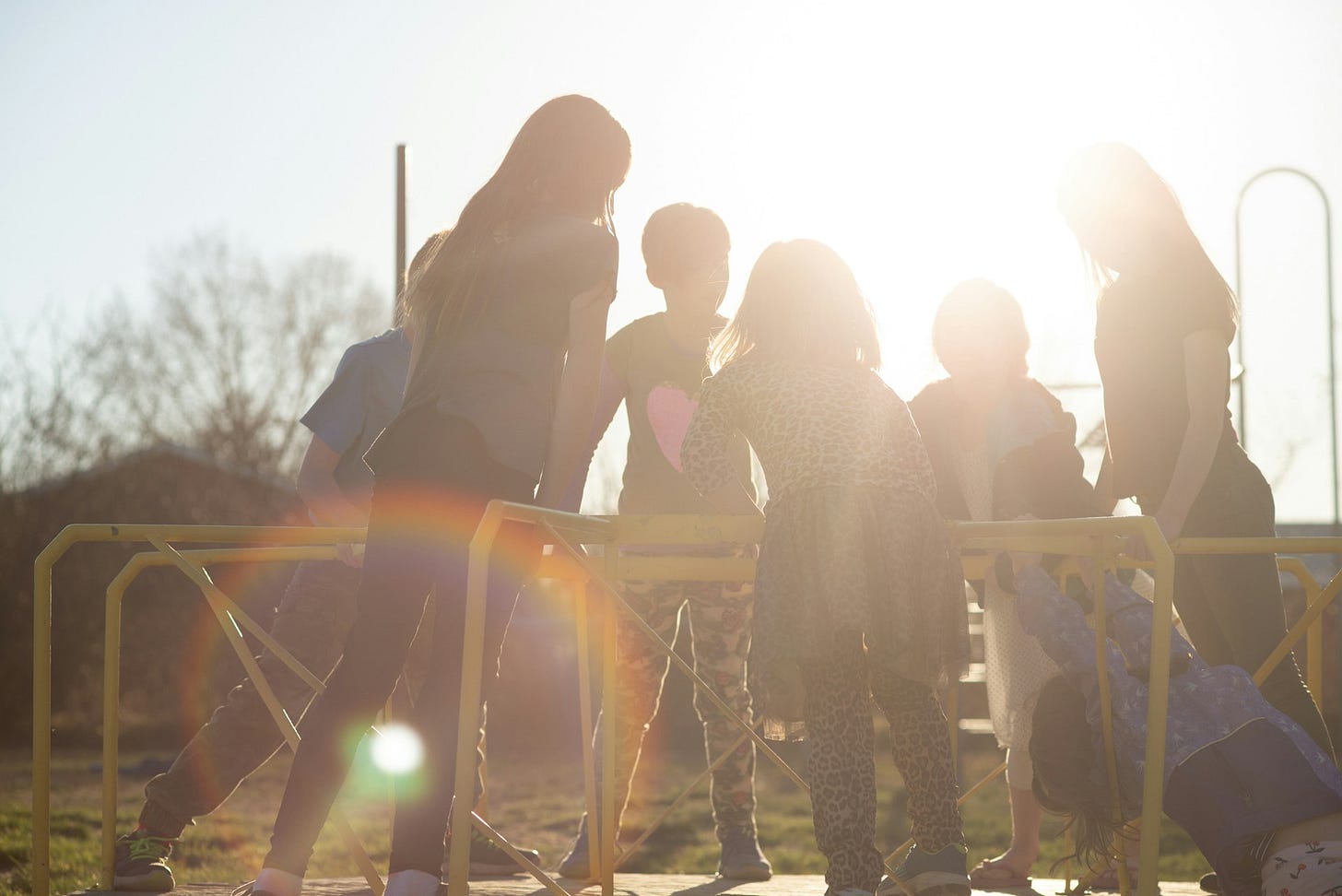Repair beyond feeling sorry.
Or how to help kids learn the power of taking ownership and grow in the process.
Hola desde Madrid!

Since we are little, we begin to experience how delicate relationships can be and the interconnectedness of our actions with the emotions and well-being of others. From a toy being taken away causing significant emotional pain to bumping into someone and causing them physical pain, it is inevitable that we will hurt others and get hurt ourselves. What we do in both instances is where stories diverge.
Recently, I was speaking with a friend whose kids are young, 2 and 4, and he was sharing with me that he is working on teaching his kids to say “sorry” when they make a mistake or hurt someone. He asked me, “What is the right way to teach your kids to apologize or to say sorry?” And I told him I would answer with this post…
The short answer is that there is no “right” way to apologize. Many people choose different ways or styles to do so.
The long answer would be to shift the focus from apologizing to repairing. “I am sorry” tends to carry very little meaning and is often used as a polite tool in society. Repairing helps both the “perpetrator” and the “victim” learn more valuable and long-lasting life lessons.
Repairing focuses on the relationship instead of the situation. It helps by highlighting behavior instead of character or personality. I am a big fan of repairing because it can help kids become aware of their triggers (this applies to kids older than 7 years).
So what is repair?
I will use the words of Dr Becky, a clinical phycologist specialized in helping people become better parents:
Repair is the act of going back to a moment of disconnection. Taking responsibility for your behavior and acknowledging the impact it had on another. And I want to differentiate a repair from an apology, because when an apology often looks to shut a conversation down -- “Hey, I’m sorry I yelled. Can we move on now?” -- a good repair opens one up.
I know you are thinking, “But how can my kids learn to repair?” The answer is simple: when you practice repairing, they will learn it from your example. A great place to showcase repairing is with your spouse or partner. I advise my clients to repair in front of their children if they fought in front of them. There are many benefits for children to see that conflict is totally normal, even if sometimes parents cross the line, and that repairing is a key part of conflict resolution. Instead of the traditional “I am sorry,” which has no depth and tends to sweep emotions and learnings under the rug.
How to repair according to children’s developmental stages:
Ages 3 to 5
“Hi I wanted to give you a hug because I know I hurt you. I did not mean it.”
Ages 6 to 12
“When this happened I reacted (said / did) in X way and I hope you can forgive me for the way I acted with you. I know it was hurtful.”
Ages 13 to 18 (and adults)
Name what happened, take responsibility, state what you would do differently the next time. This could be an example:
"Hey. I keep thinking about what happened the other night at XX. I'm sorry I X. I'm sure that felt XX. And it wasn't your fault. I'm working on staying calm, even when I'm frustrated."
As you can see all of these approaches focus on the event and action rather than on the person. It also brings the attention back to the person who hurt the other, and does not focus on blame or shame.
If you are intrigued by repairing, research shows these to be the top 3 benefits of learning how to repair:
1. Strengthens Trust and Security
Building Trust: When conflicts are resolved constructively, it reinforces trust between individuals. They learn that disagreements can be handled without fear of negative consequences, leading to a more secure and trusting relationship.
Emotional Safety: Effective repair strategies create an environment where both parties feel emotionally safe to express themselves and know that their feelings will be respected and understood.
2. Improves Communication Skills
Enhanced Understanding: Repairing after conflict requires active listening and clear communication. This process helps individuals understand each other's perspectives better, leading to more effective and empathetic communication.
Reduced Misunderstandings: By addressing issues directly and honestly, misunderstandings are clarified, reducing the likelihood of future conflicts based on miscommunication.
3. Fosters Emotional Connection and Empathy
Deeper Emotional Bonds: Working through conflicts together can deepen emotional bonds. It shows that both parties value the relationship enough to work through difficulties, which can strengthen their connection.
Increased Empathy: The process of repairing after a conflict often involves recognizing and validating each other’s feelings. This fosters empathy, as individuals learn to see things from the other’s perspective and develop a greater understanding and appreciation of their feelings and needs.
Thank you, Johan, for the question!



